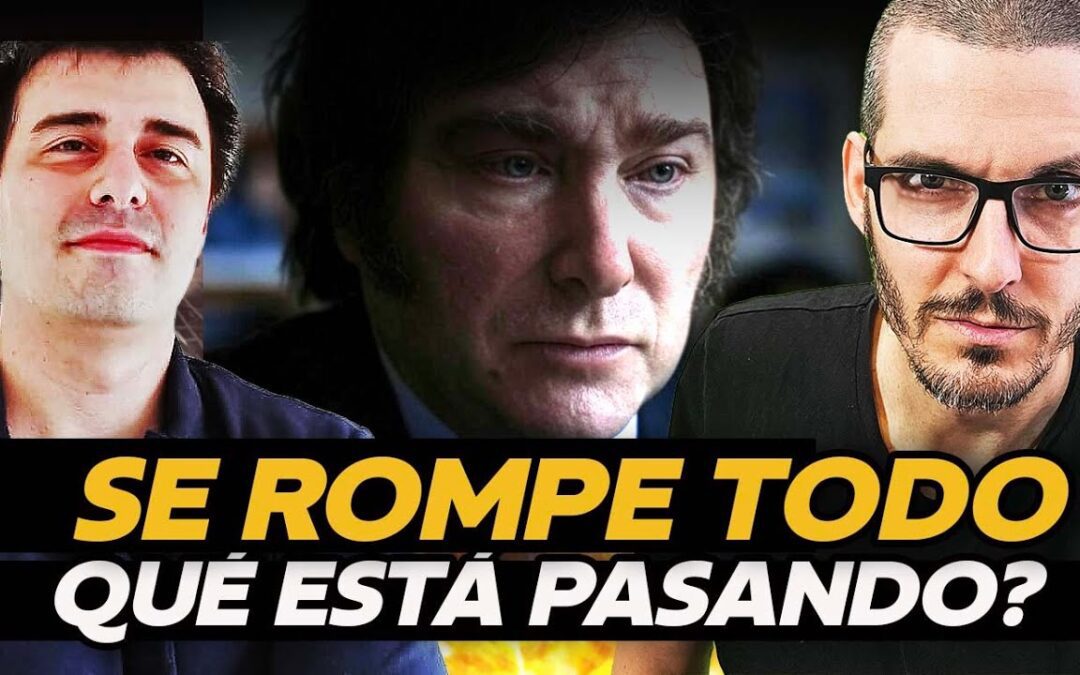TM
🚗 Importers like Toyota Argentina were using a carry trade strategy, borrowing in dollars and investing in pesos.
🔄 Due to uncertainty about a possible change in the monetary and exchange rate regime, these companies are now closing their carry trades and repaying their debts in dollars.
📈 This shift is contributing to the increased demand for dollars and the pressure on the exchange rate.
@ClaveBursatilTV:
“But the issue is that certain large players in the foreign exchange market, in particular, we are talking about companies that are importers, for example, you are Toyota Argentina, and so you have to pay the parent company for all the cars they send you, because the cars made in Brazil are imported. So, you can, if you want, get into debt with the parent company, tell them, ‘Send me the cars and write it down on a piece of paper,’ that is, like ‘Give me credit.’ That is commercial credit. The parent company, instead of charging you today, charges you an interest rate in dollars and says, ‘I’ll lend you the money.’ So Toyota Argentina, I don’t know if it’s Toyota, I’m just using the name of an importing company, takes the pesos with which it was going to pay for those cars, converted into dollars, and invests them at an interest rate, because it realizes… you left, G? Well, I’ll stay here. Here I am. Ah, there you are. It realizes… what happened? You left. Well, Toyota says, ‘Hey, I’ve been getting into debt in dollars with the parent company, commercial credit, and I take the pesos that I would have used to pay for those cars and invest them at an interest rate and make money financially,’ that is, I do a carry trade with the money from the import. That financial flow was explaining many of the Central Bank’s purchases during the year 24, 25. When those companies say, ‘Hey, there’s going to be a change in the monetary regime, maybe it’s convenient for us to start closing these debts in dollars,’ basically it’s being short dollars, owing dollars, owing dollars. Conclusion: given the uncertainty of a possible change in the monetary and exchange rate regime, the companies that were short dollars because it was more convenient for them to be long pesos and short dollars, said, ‘Let’s turn around, close the carry, and repay the debt in dollars because I don’t know if the exchange rate jumps in the change of model, of regime, and we end up screwed.’ Not so much, because nobody expects the dollar to fly much, that is, today the future dollar after the elections prices a jump of 20%, which is the… I like it, uh, that is, it’s not that… uh, it’s not that… For example, before you had an expectation of devaluation that the dollar would double in other governments, let’s say. So, well, those companies close that carry trade and demand dollars or demand dollar futures, and well, there we have… but that also precipitated the redemption of individuals through mutual funds, which I just described, and well, here we are with a future curve that rose a lot, bonds in pesos that fell due to these redemptions that we are talking about, strong sales of dollars in the Central Bank of these importing companies that demand dollars to return to the parent company, and well, and today, on top of that, to add fuel to the fire, Caputo’s interview, supposedly to calm the waters, when they ask him, ‘Hey, how much will the amount be?’ ‘We don’t know, that will be decided by the fund.’ ‘Ah, and when does it come out?’ ‘Relax, don’t… For that, don’t say anything.’ The deal is already done, but well, terrible, the dollar future blew up.”
Watch the exact part of the video where Gus talks about Toyota here:
View the video on YouTube.
Read more articles featuring the most recent analysis of Toyota (TM) at this link: TM stock.


